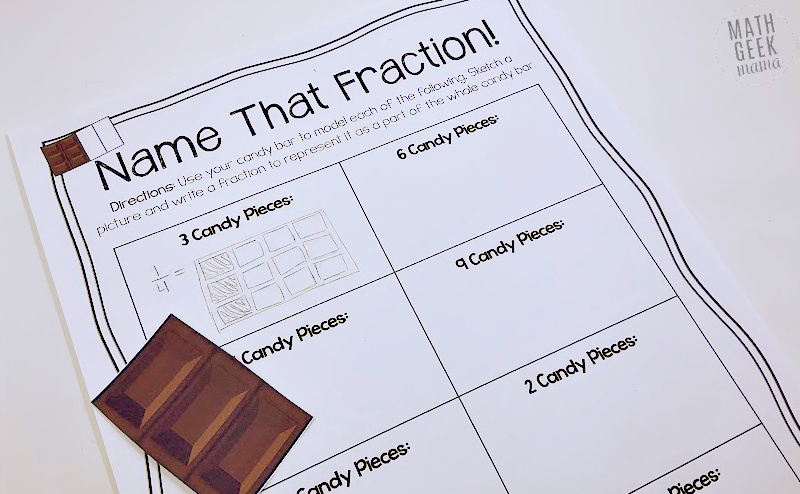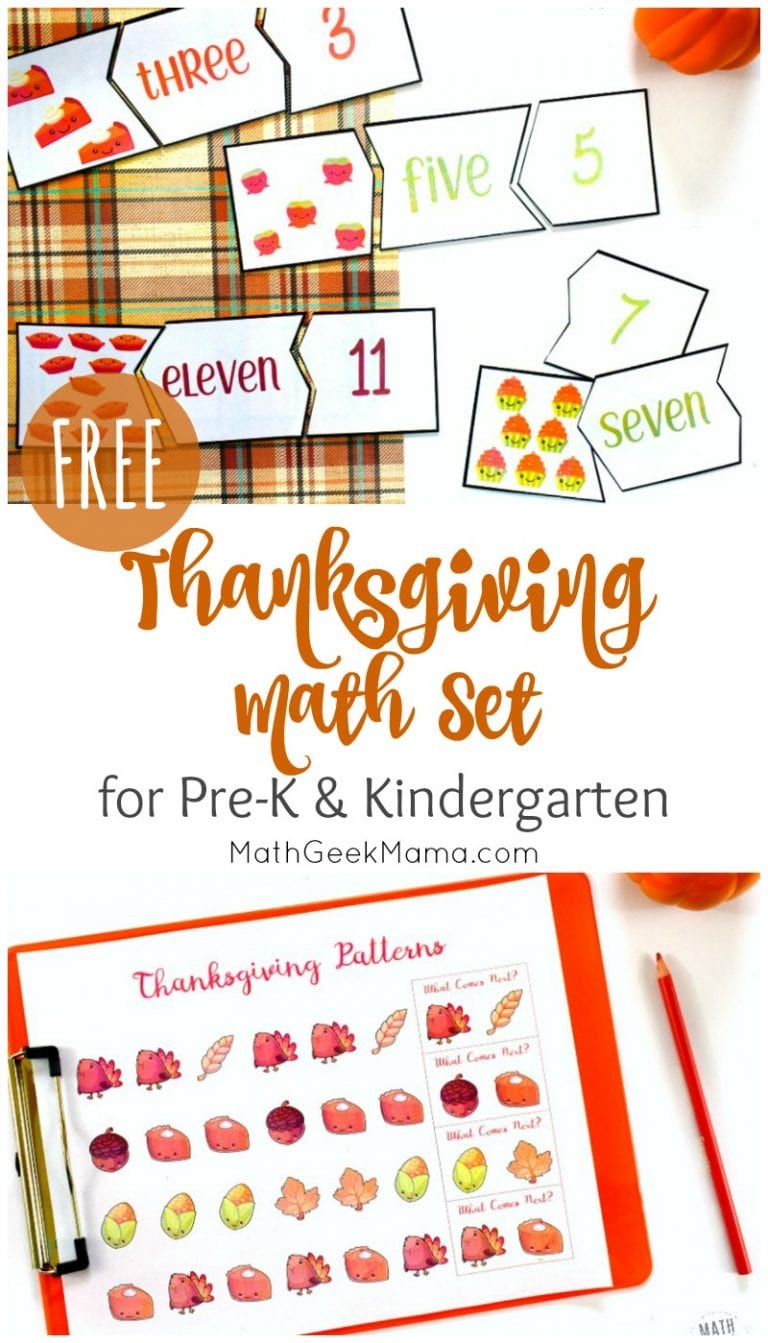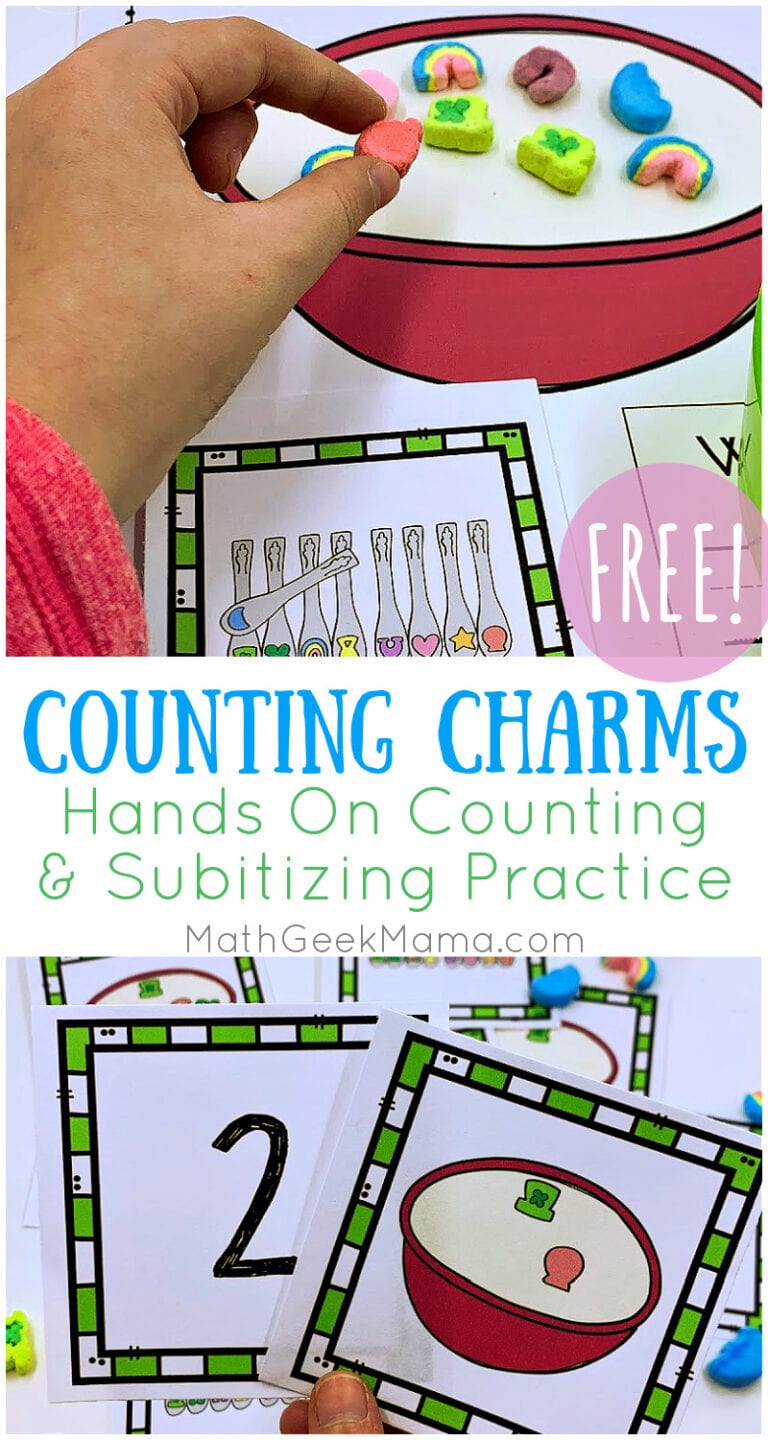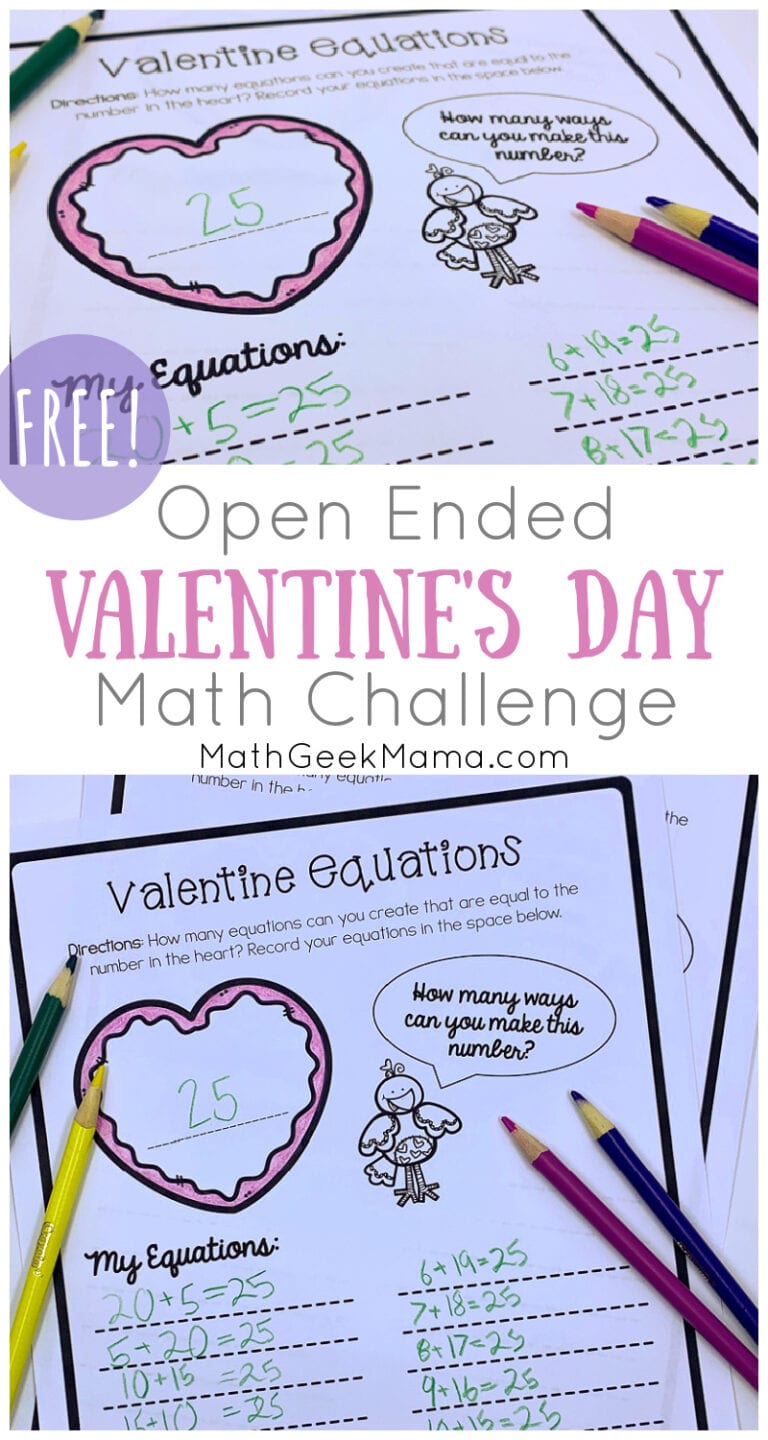{FREE} Candy Bar Fractions: Hands On Fraction Practice
Looking for a fun and hands on way to model fractions with your students? Candy bar fractions are the perfect introduction to adding and subtraction fractions with unlike denominators-plus, kids get a tasty treat when they finish!
Although it is not an everyday occurrence (or monthly even), one of my favorite ways to help kids make sense of big math topics is with candy. Yes, I know we have to be careful about sugar intake, and no, my kids aren’t sitting around eating bon bons all day everyday. But there is just something about letting kids learn with candy that instantly engages even the most reluctant learners, ya know? And with a tricky topic like understanding fractions with unlike denominators, making it less intimidating with chocolate bars just makes sense. Wondering how much learning can actually happen with candy bar fractions? Let’s explore!

*Please Note: This post includes affiliate links which help support the work of this site. Read our full disclosure here.*
Hershey Chocolate Bars: The Perfect Fraction Model
Hershey chocolate bars are a wonderful way to model fractions because there are twelve equal pieces in each bar. And twelve is a lovely denominator for exploring fractions because there are so many options for equivalent fractions!
By breaking apart the candy bar into pieces, you can easily see that each piece is 1/12 of the whole.
Then other nice fractions are easy to see as well:
3 pieces would be 3/12 or 1/4.
4 pieces would be 4/12 or 1/3.
6 pieces would be 6/12 or 1/2.
There are other fractions there as well, but you can easily visualize these common fractions using candy pieces.
You can THEN easily create fractions with a common denominator of 12 by modeling each fraction with individual candy pieces.
Materials Needed for Candy Bar Fractions Lessons:
- Printable pages (link to my shop is included at the bottom of this post)
- Chocolate candy bars (such as these)
Although the fun of this comes from working with actual candy and enjoying the treat when you finish, I realize that might not be feasible for everyone.

In that case, there is also a page of printable candy bars included in the free download. You can then cut them out and provide a “candy bar” to each student.
In this case, you will also need a pair of scissors so each child can cut out the individual candy bars however they want (some might keep some pieces in tact, rather than cutting out each individual piece).
Modeling Fractions Introduction:
The first page of this free download has kids “Name That Fraction.” The goal of this page is to simply help them “see” fractions of the candy bar, just like I shared above.
Students can sketch 3 pieces of candy out of the 12 to model 3/12. Then they can simplify that fraction to 1/4.
After they have done work for each question, they have a quick reference page for how many pieces are equivalent to each fraction.
This is a good way to remind students what fractions are and what they represent (part of the whole, between 0 and 1) before you dive into more complex operations.
You might also practice adding fractions with a common denominator of 12 before you move onto unlike denominators.
Walking through just a few examples on the board together will help them make the leap to adding with unlike denominators and modeling with their candy pieces.

Adding Fractions with Candy Bars:
When your kids are ready, they can work on the “Add That Fraction” page. This includes fraction addition with unlike denominators, which can easily be modeled with their candy pieces.
For example, when adding 1/2 + 1/3, they can show 6 candy pieces + 4 candy pieces, because that is how many pieces represent each fraction.
This will help them rewrite the problem with a common denominator of 12, making the problem 6/12 + 4/12, which equals 10/12.
From there, they can work on simplifying the fraction (if they are familiar with that).
Obviously, there are other ways to rewrite the fractions so that they have a common denominator. BUT focusing on 12 allows them to make the connection to equivalent fractions that they can see and touch.
Oftentimes, kids focus so much on a procedure or rules to follow that they don’t actually understand why they’re doing what they’re doing.
Using the hands on visual helps students develop a conceptual understanding of using equivalent fractions to create common denominators with the end goal of adding the fractions.
Fraction Subtraction:
Once kids feel comfortable rewriting the fractions so that they have a common denominator, subtraction is super easy.

The last page of this freebie includes subtraction problems with unlike denominators, which again can easily be rewritten as twelfths.
By this point, you will likely have students who no longer need the visual model of candy bar pieces to solve each subtraction problem, but for students who still want the visual, they can model each fraction, rewrite as an equivalent fraction and then subtract the given fractions.
You might also ask if they can find a problem that can be rewritten with a denominator other than 12. This can open up the discussion to other ideas and strategies for adding and subtracting fractions.
Hands On Math: Candy Bar Fractions
Love the idea of exploring fractions with chocolate bars? The complete product includes 7 different activities for exploring fractions, equivalent fractions, addition, subtraction and more.
Use these with small groups, as math center activities or partner games.
>Learn More About Candy Bar Fractions HERE
Want to try out the sample set? Click the link below to head to my shop and grab the FREE candy bar fraction activity pages.

{Click HERE to grab the Candy Bar Fractions Sample Set!}
Looking for more hands on fraction resources? Check out the links below:













